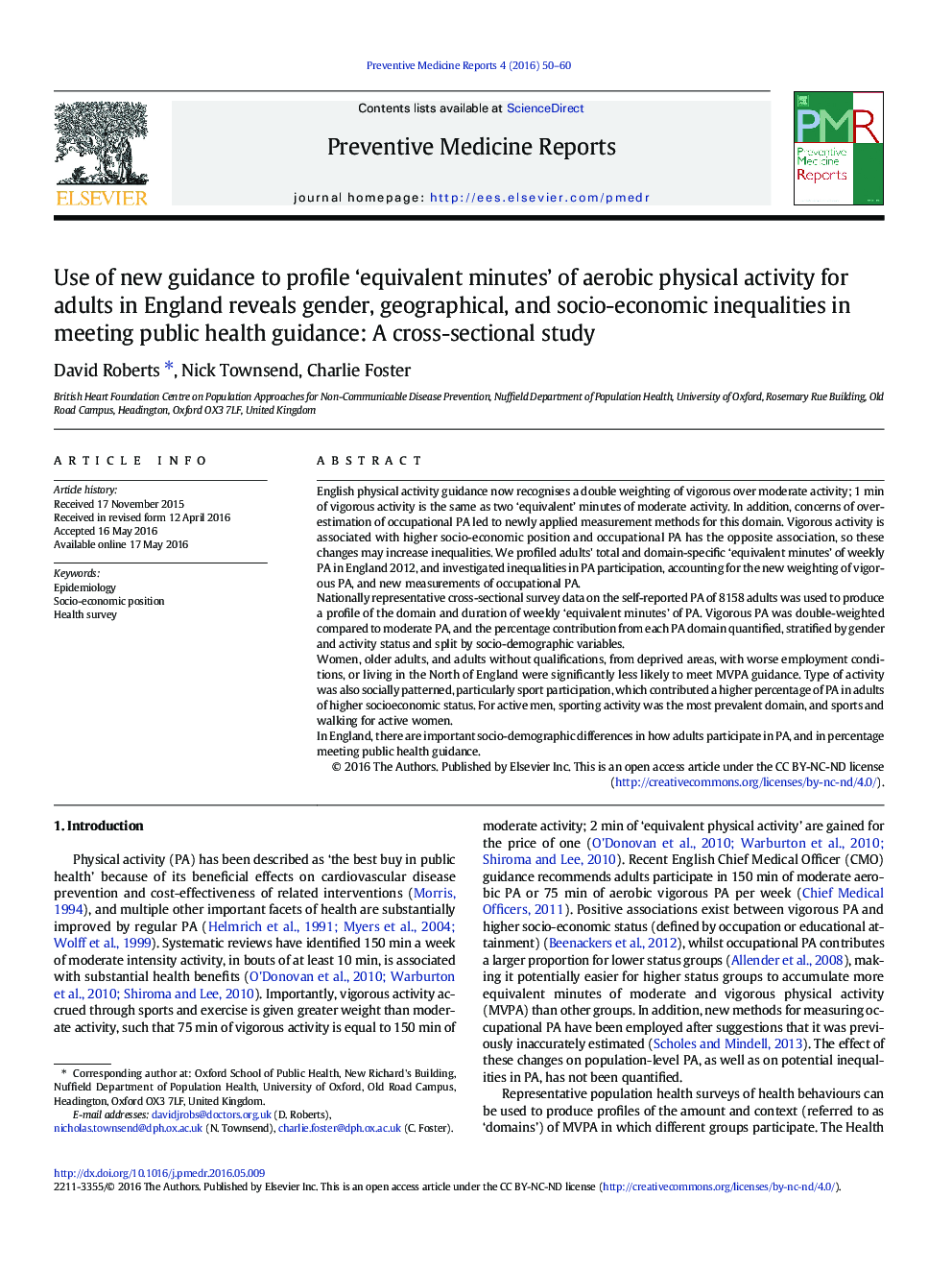| Article ID | Journal | Published Year | Pages | File Type |
|---|---|---|---|---|
| 4202244 | Preventive Medicine Reports | 2016 | 11 Pages |
•We present a nationally-representative profile of MVPA for adults in England.•This uses the latest MVPA guidelines and improved occupational PA measurement.•There are socio-economic inequalities in the percentage of adults meeting guidance.•The way adults participate in physical activity is also socially patterned.
English physical activity guidance now recognises a double weighting of vigorous over moderate activity; 1 min of vigorous activity is the same as two ‘equivalent’ minutes of moderate activity. In addition, concerns of over-estimation of occupational PA led to newly applied measurement methods for this domain. Vigorous activity is associated with higher socio-economic position and occupational PA has the opposite association, so these changes may increase inequalities. We profiled adults' total and domain-specific ‘equivalent minutes’ of weekly PA in England 2012, and investigated inequalities in PA participation, accounting for the new weighting of vigorous PA, and new measurements of occupational PA.Nationally representative cross-sectional survey data on the self-reported PA of 8158 adults was used to produce a profile of the domain and duration of weekly ‘equivalent minutes’ of PA. Vigorous PA was double-weighted compared to moderate PA, and the percentage contribution from each PA domain quantified, stratified by gender and activity status and split by socio-demographic variables.Women, older adults, and adults without qualifications, from deprived areas, with worse employment conditions, or living in the North of England were significantly less likely to meet MVPA guidance. Type of activity was also socially patterned, particularly sport participation, which contributed a higher percentage of PA in adults of higher socioeconomic status. For active men, sporting activity was the most prevalent domain, and sports and walking for active women.In England, there are important socio-demographic differences in how adults participate in PA, and in percentage meeting public health guidance.
